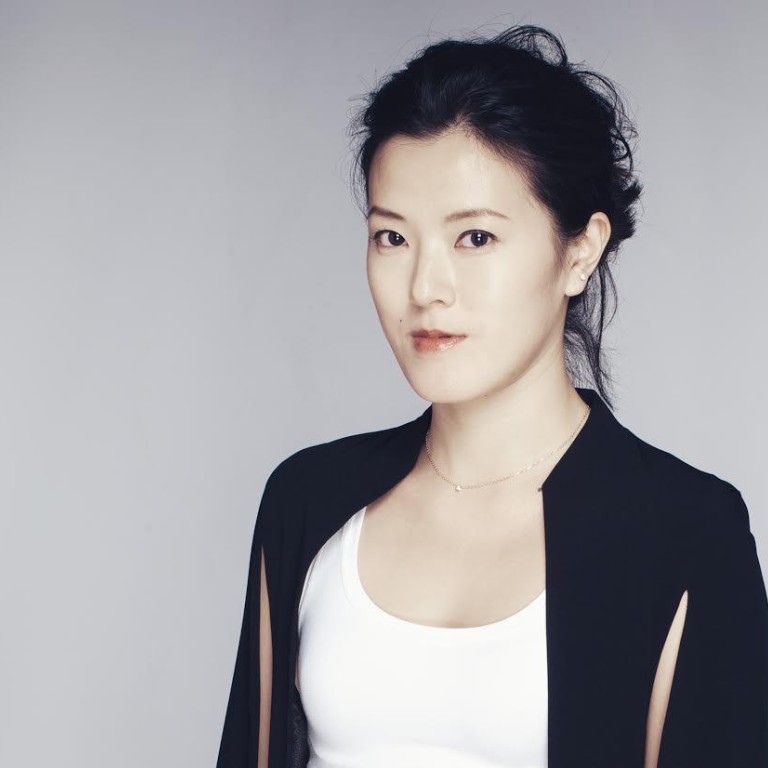
Heting Jewellery's Carina Wong on making unconventional pieces
The brand's Hong Kong-based artistic director talks about her mushroom-hunting field trips and why she champions the use of unconventional stones
"I was 16 or 17 years old when I started dabbling and making jewellery pieces. The hobby started with simpler designs like beading with semi-precious stones, metalsmithing with brass and silver, and making accessories out of wood.
Later I developed my knowledge and studied jewellery design and gemology. Strangely enough, I don't think of myself as a jewellery designer. I'm very enthusiastic about a lot of other creative endeavours as well, such as calligraphy and embroidery.
A time came when I wanted to create more intricate pieces than I could do with my own hands, so I started to assemble a team of artisans to help. What you see today are the results of that, as part of Heting Jewellery.
Heting Jewellery for folkloric, one-of-a-kind pieces
My main focus and responsibility for the brand is product development, while my partner Eames Jee Wan helps translate these creative ideas into brand collateral and creative content. He communicates the story of the brand through different mediums, and focuses more on the business side of the label.
Eames and I don't consider Heting to be part of the mainstream jewellery market. Instead, we see the pieces as miniature sculptures of nature. The main focus is to portray the stories behind our products through the craftsmanship and the choice of stones. We love artisanal and handcrafted objects.
I studied at the Gemological Institute of America (GIA). It was eye-opening because I had a chance to look at stones under a microscope. You can see the imperfections in stones caused by impurities and other factors. It taught me to appreciate them more, because this is what gives the gems their character.
Studying at GIA also allowed me to see a wider variety of stones. The jewellery industry today is dominated by popular stones such as diamonds, but I wanted to look beyond those and see what other materials could be used.
The materials we use are not so obvious, and also not as conventionally popular. I don't use a lot of diamonds. For my first collection, I concentrated on black Tahitian pearls. However, rather than have these pearls in their traditional, spherical shape, my craftsman carved them and transformed their shape into a flower bud. Another key stone we use is white icy jade, which looks like a water droplet.

The conceptualisation and execution of this collection was very time-consuming. There was a lot of energy spent designing the branches, leaves and twigs of the collection to make it appear as natural as possible. That said, you learn quickly that these elements are textured and jagged by nature, and not the most friendly thing to put against your skin.
So I had to experiment and find ways to design pieces so they would sit comfortably on the body without pinching or poking. We also did test runs on people of various shapes and sizes, just to be sure there were no glitches.
I love the natural world and I see a lot of designers who are trying to imitate nature. I don't believe in that philosophy, it's too direct. I would rather pick some of the elements I see and re-imagine them into another kind of flower or shape that comes from my imagination
Eames and I like going on field trips. We love to document our time out by collecting specimens such as leaves and twigs, as well as taking pictures of small insects and animals before collating them into a scrapbook for future reference and inspiration.
We like to go outdoors as often as we can. In Hong Kong, for example, we love to go mushroom hunting. The weather here is very humid, which is ideal for mushrooms.
I remember that we came across a patch of them hidden under some tree bark near a waterfall. I wanted to come back and sketch them, but by the time we returned the mushrooms had disappeared. It's amazing how mushrooms can come and go so quickly depending on the weather. These field trips make us realise just how beautiful Mother Nature really is.
Even when we go on holiday, we try to have a little time to go off the beaten track. One of our recent trips was to Yilan in rural Taiwan. We stayed with the local tribe and observed the way they farmed. They also had a mushroom garden.
Eames and I find that the local people there are very proud to show the local flora and fauna that thrive in their backyard. This rare opportunity allowed us to compare the species with those we've seen in other parts of the world.
I love the natural world and I see a lot of designers who are trying to imitate nature. I don't believe in that philosophy, it's too direct. I would rather pick some of the elements I see and re-imagine them into another kind of flower or shape that comes from my imagination.
Our long-term vision for Heting is to be more than just a purveyor of jewellery. We want to introduce the brand as a way of living. Without trying to sound too grand and enlightened, our goal is to encourage people to sit back, dwell and contemplate where they are in time and life. The brand is a vehicle to express these ideals.
In terms of our business goals, we also want to express this philosophical attitude through other mediums, but for now jewellery is definitely the backbone."

